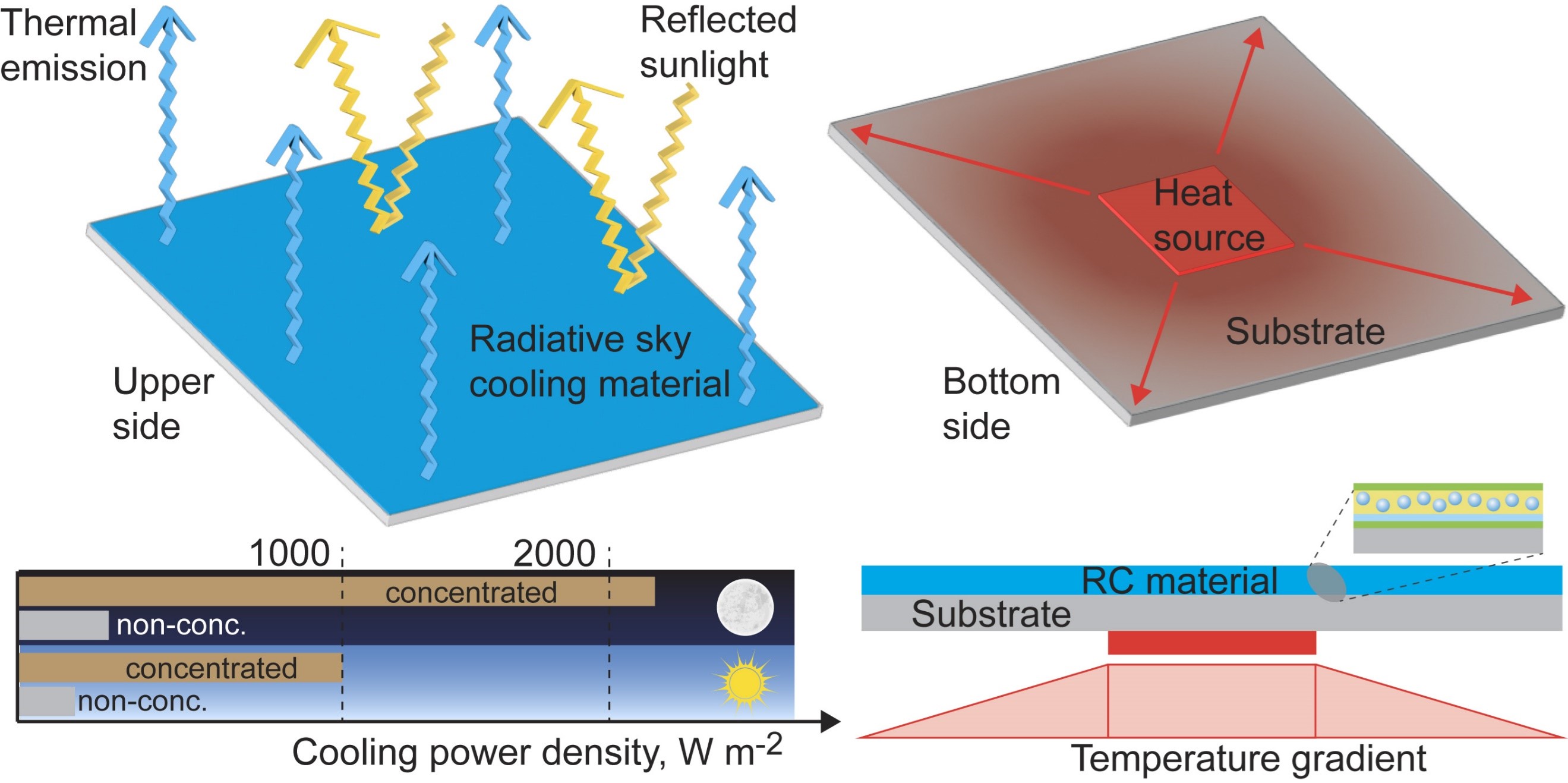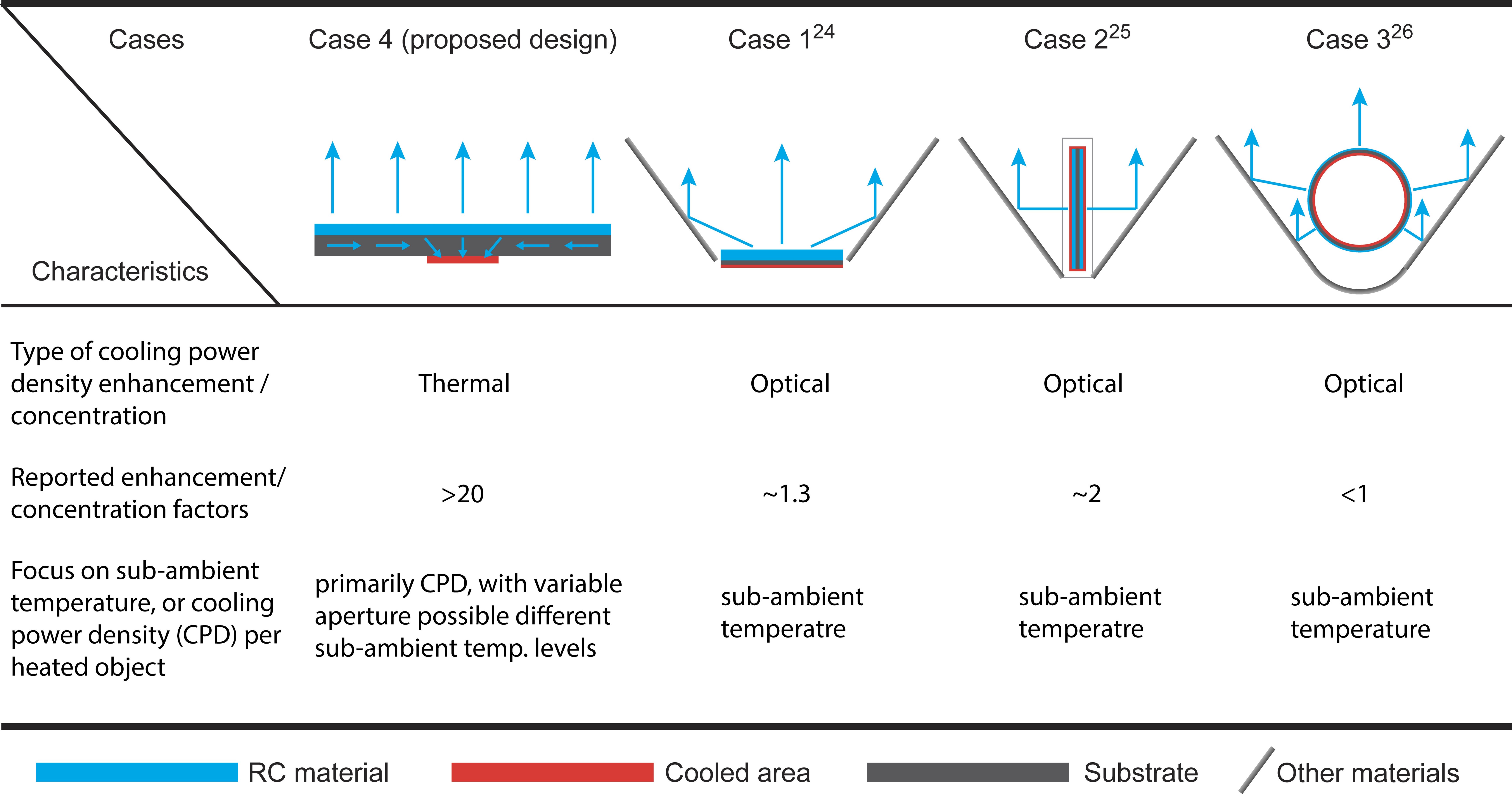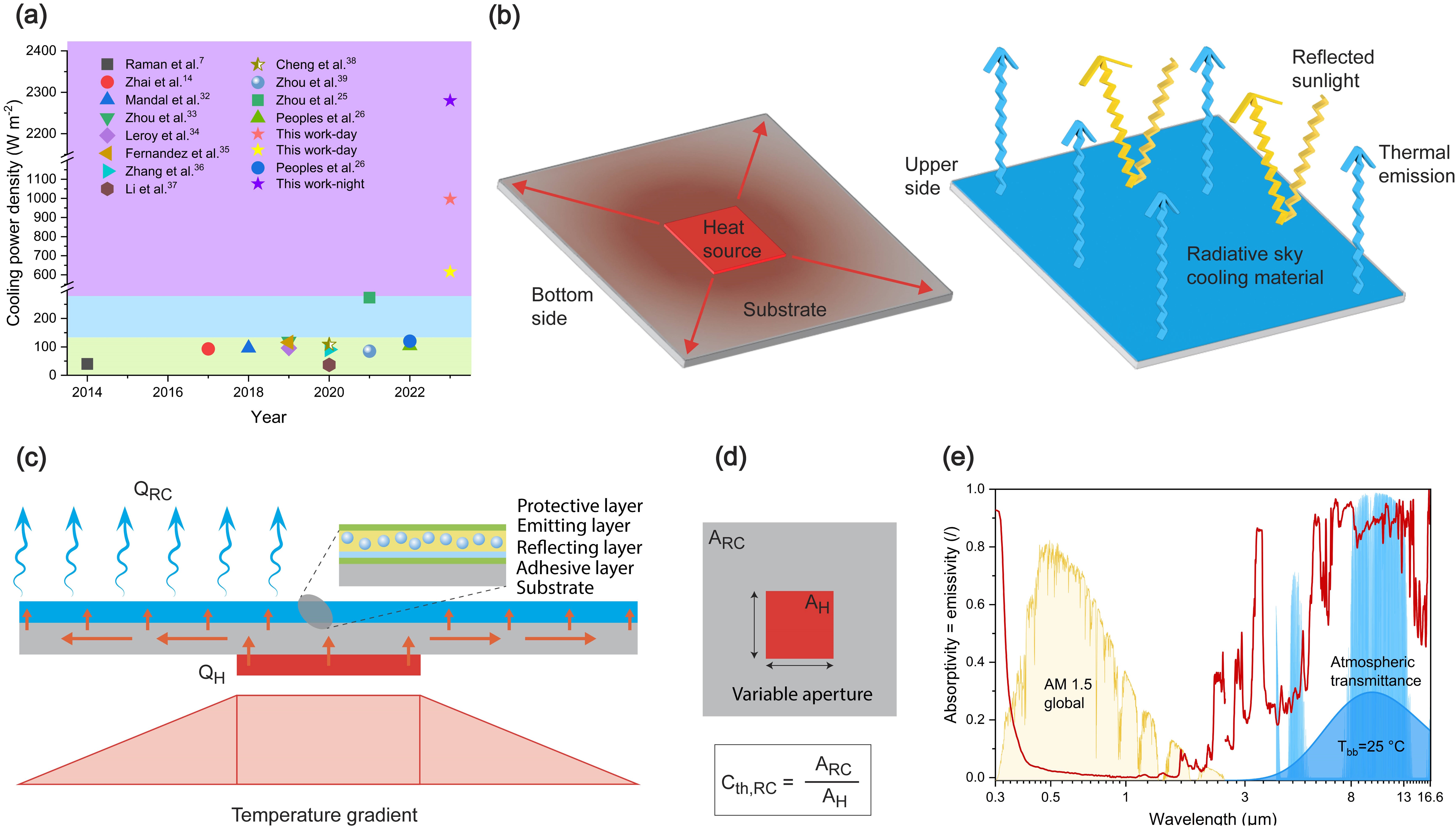
News

News
Recently, researchers from the Energy-Water-Air interdisciplinary innovation team ITEWA led by Professor Wang Ruzhu from School of Mechanical Engineering at Shanghai Jiao Tong University published an original scientific paper entitled Radiative Sky Cooling Thermal Concentration with Cooling Power Exceeding One kW Per Square Meter in Energy & Environmental Science (IF=32.5). This paper reports a rationally designed and scalable AsymSkyCool method (Asymmetrically-sized heat-source-on-radiative-Sky-Cooling-coated-substrate) that allows generated cooling energy to be concentrated and localized to the heat source. The developed radiative sky cooling thermal concentrator (tcRC) achieves over 2000 W m-2 and close to 1000 W m-2 at almost 500 W m-2 solar irradiation. The nearly tenfold augmentation compared to the state-of-the-art radiative sky cooling concentrators allows efficient, sustainable cooling of energy-dense applications using cold space as a heat sink.


The world is facing a severe challenge on how to limit the global surface temperature. This can be achieved by significantly reducing carbon dioxide and other greenhouse gas emissions. The demand for environmentally sustainable cooling solutions has intensified in recent years. Unlike traditional active cooling systems that consume energy, these spectrally modulated passive radiative sky cooling materials (RC materials) operate without electricity. Owing to intrinsic optical properties, such materials release infrared heat from the Earth into outer space through the atmospheric window that is transparent to specific wavelengths, achieving cooling without any electrical input. Radiative sky cooling materials achieve day-time sub-ambient cooling by leveraging two simultaneous mechanisms: high reflectance in the solar spectrum 0.3-2.5 μm and high emissivity over the atmospheric window within the long-wave infrared range 8-13 μm. However, the cooling power density of such materials is approximately one magnitude lower (100 W m-2) than terrestrial solar irradiation. Furthermore, improved optical characteristics could yield a modest increase in cooling power density due to the blackbody radiation limit.

The working principle of the AsymSkyCool method relies on an asymmetrically sized heat source coupled to a larger substrate with a radiative sky cooling (sRC) area that passively generates cooling energy owing to intrinsic spectrally selective properties of the radiative film. UV-Vis-NIR and FTIR spectral measurements indicate that more than 97% of incoming solar radiation is reflected, while the emissivity within the atmospheric window is 88%, indicating a considerable potential of the RC material for heat dissipation to outer space. Owing to the existing temperature gradient inside the substrate due to the presence of a heat source, the heat naturally moves from the warmer region to the colder one. The main implication is that the heat becomes deconcentrated. Inversely, the sky-based cooling energy becomes thermally concentrated and localized.
The authors investigated the scalability of the sRC with respect to the thermal concentration factor (Cth,RC), defined as the ratio of the RC material area to the heat source area. The initial experiment using a non-concentrated (Cth,RC = 1) and a concentrated sRC (Cth,RC = 33.6) indicated a colossal ability of the concentrated sRC for heat dissipation. For instance, when delivering the same amount of heat to both samples, the temperature of the non-concentrated sample quickly exceeded 60 °C. In comparison, the concentrated sample still remained at a sub-ambient temperature of –5 °C. The authors also studied the scalability based on real-world experiments in Shanghai and Kunming (China) with a factor in the range of 1-33.6, the largest tcRC efficiency up to 90%, defined as the measured cooling power density versus the theoretical, has been identified for a factor of up to 8. Beyond this value, the efficiency drops. However, the ability to effectively cool energy-dense heat sources increases. To increase the efficiency, the authors also investigated the role of substrate thermal conductivity through three-dimensional (3D) numerical simulations. With the increase of the substrate’s ability to transport heat in the lateral direction, the temperature gradient for efficient cooling energy concentration drastically increases. This insight calls for future scientific research oriented at high thermally conductive substrates coupled with radiative sky cooling materials in monolithic designs.

To confirm the effectiveness of the tcRC concept, a total of 66 experiments across three different locations - Ljubljana, Slovenia (46.04° N), Shanghai, China (31.02° N), and Kunming, China (24.86° N) - between August and December were conducted. Such extensive experimental validation affirms the concept's performance fairly across a broader range of ambient temperature and relative humidity conditions, as radiative sky cooling is most affected by the amount of precipitable water vapor (PWV) in the air. This sets the study apart from previous reports, which typically relied on a limited set of datasets from a single location with slight variation in ambient air conditions.

Finally, the authors demonstrated the practical potential of the tcRC concept by conducting a 6-day experimentally validated high-power LED cooling proof-of-concept. The results exceeded expectations, with the tcRC approach outperforming an active cooling solution composed of an extended surface and fan, even in less favorable sky conditions.
Looking ahead with a big-picture perspective, the authors believe that the innovative approach to radiative cooling energy thermal concentration will facilitate numerous future concepts and studies, much like solar thermal concentration has. These studies are poised to cover a wide range of topics, from fundamental to applied physics, and will include practical applications in the field of thermal engineering. Furthermore, the AsymSkyCool method and the tcRC concept could be co-designed with architects to create building-integrated solutions due to the higher degree of various high thermally conductive materials, including metals.
Prof. Wang Ruzhu's innovation team in the field of energy-water-air has long been committed to addressing fundamental scientific problems and key technologies at the forefront of the interdisciplinary intersection of energy, water, and air. Their aim is to achieve comprehensive solutions at the material-device-system level through interdisciplinary approaches, driving breakthroughs in related fields. In recent years, the team has published a series of interdisciplinary papers in high-level journals such as Science, Nature Communications, Joule, EES, Advanced Materials, and more.
Paper link: https://doi.org/10.1039/D3EE03214K

Shanghai Jiao Tong University
Address: 800 Dongchuan Road, Shanghai
200240